Former President Jimmy Carter may have a somewhat mixed record, with a Nobel Peace Prize on the one hand and a lost 1980 reelection bid on the other. However, it is thanks to Jimmy Carter that there is craft brewing – and more importantly home brewing! In 1978 Carter signed into law the ability for home brewers making less then 50 gallons for personal use to make beer legally and without the need to pay any taxes! Prior to that time home brewing was hidden behind closed doors and illegal.
Since that time, craft brewers have exploded resulting in hundreds if not thousands of small producers starting in their garage and turning it into a real business (yes, at that point they have to start paying taxes). Jason, our eldest son, has been home brewing for several years and we have tasted the results often. (He has no intention of turning this into a business.)
While we were visiting recently Jason decided to make a batch of what he calls G’Nu Castle Brown Ale, a “clone” of New Castle Brown Ale.
Following the spirit of the original New Castle, this brew requires two separate fermentation tanks (buckets). One batch is prepared to an Original Gravity (O.G.) of 1.050, while the second is prepared to 1.035 OG.
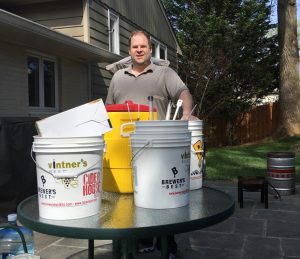
Gravity is a measurement of the wert’s density, and in home brewing is a measure how much malt (sugar) is dissolved into the water.
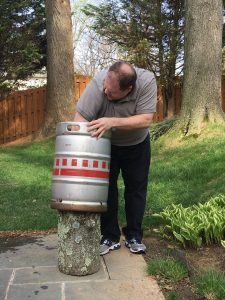
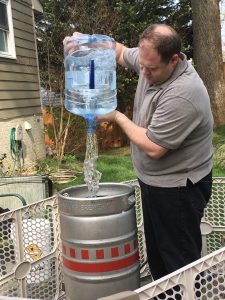
Distilled water has a Specific Gravity (S.G.) of 1.000. The first batch, which is denser and has a higher Gravity, will end up with a higher Alcohol by Volume (abv). The second batch will have a lower abv because it has less malt to convert to alcohol.
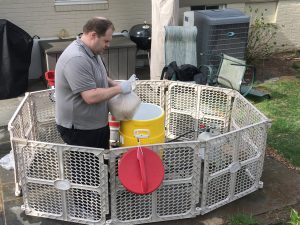
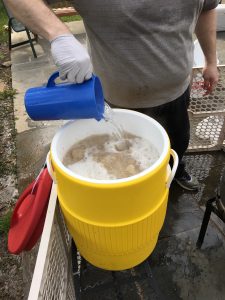
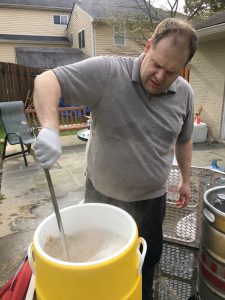
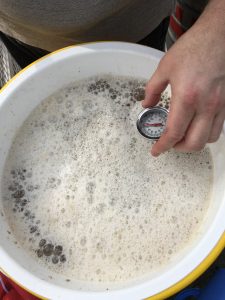
The unique qualities of these two batches help give this New Castle clone it’s distinctive taste. The higher Gravity means the yeast converts the malt faster (more food to eat, so it eats faster) and the product has a “fruitier” flavor to its alcohol. The lower Gravity batch converts slower and will end up with a more “malty” flavor. These two batches are combined after fermentation into a single batch, and mixed thoroughly.

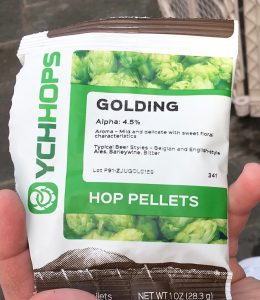
After about two weeks, the two batches are each transferred to a new (sanitized) fermentation tank. This accomplishes two objectives; first the “debris” that has settled on the bottom of the primary fermentation tank (which is called “trub”) is unwanted and gives poor flavor and clarity to final beer, the second is the transfer re-originates the beer and reinvigorates the yeast to convert more malt to alcohol. During this transfer an additional Gravity reading is taken.
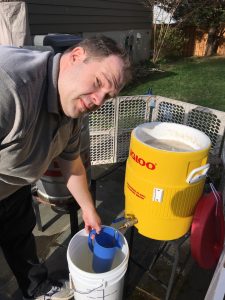
At this point the Gravity was approximately 1.035 for the first batch and 1.018, which is about half of the fermentation that is expected. The yeast will continue to convert malt to alcohol for the next few weeks.


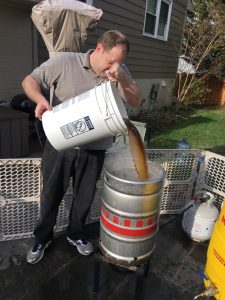
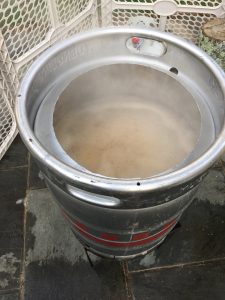
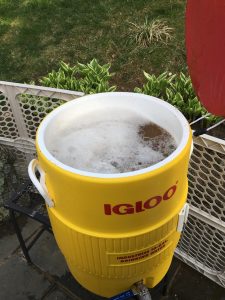
Once no further malt conversion is occurring, which can be judged by taking several Gravity readings over several days until there is no change in the reading (or just letting it sit for a long time and then arbitrarily deciding “it’s done!”), it’s time to prep for bottling.
Final gravity readings are taken (1.021 for batch 1, and 1.008 for batch 2) it’s time to combine the batches and add bottling sugar. The bottling sugar is a relatively small amount of sugar that re-vitalizes the yeast and causes them to convert just a little more alcohol. The by-product of this is carbonation; which gives the beer that nice mouth feel. Because the beer has been sealed behind a bottle-cap, the CO2 has no place to escape to and becomes “dissolved” in the beer until the bottle is opened.
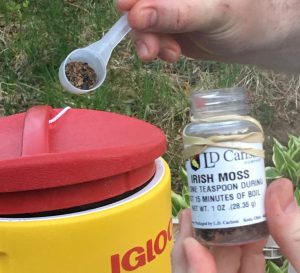

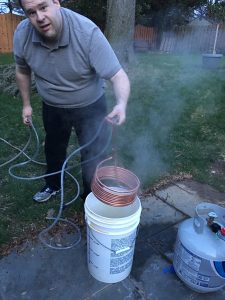
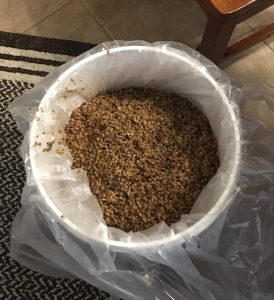

Using a special bottling wand, which only allows the beer to flow from the bottling bucket when it’s depressed inside the each bottle (which have all been very well cleaned and sanitized), the beer is transferred from a bucket where everything has been re-mixed into the bottles.
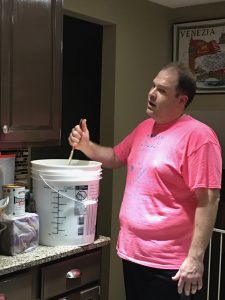
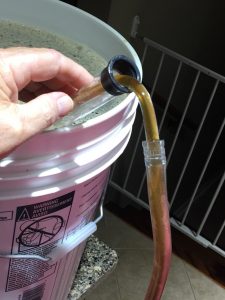
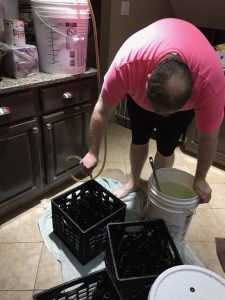
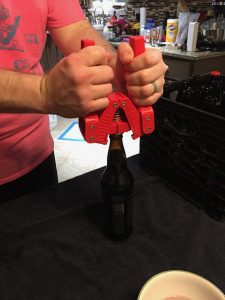
After bottling, the beer is left to sit for two to three weeks, during which time the yeast converts the small amount of sugar into both alcohol and carbonation.
This batch turned out very well, with an estimated final abv of 4.5%, and a flavor that is very much like New Castle. We used a little too much sugar for bottling, so it’s a little over-carbonated, which is why we had one bottle explode during bottle fermentation.
Because this is a home brew, the yeast remains “alive” because there’s no pasteurization process to kill off the yeast. So, as the beer continues to rest the flavor may change subtly over the ensuing weeks and months.
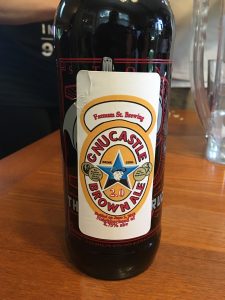
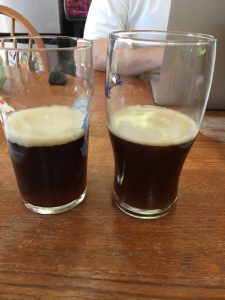

This adds a new element to home brewing as you could have something that’s pretty terrible after the first two weeks, but is actually really great after two months!